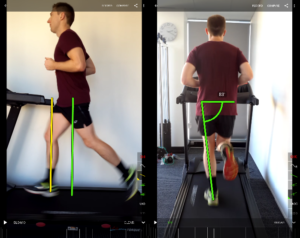As a recreational sport running is becoming increasingly popular. This is partly due to a growth in awareness of its potential benefits, including but not limited to improved mental health, and reduced risk of cardiovascular disease and diabetes. The downside is that it comes with a high incidence of injury. As reported previously in ‘Strength Training for Distance Running’ (https://www.ibphysio.com.au/8609-2/), running-related injuries affect up to 85% of runners, which often translates to time off running, which is a nightmare for anyone who enjoys the sport.
http://www.youtube.com/watch?v=_htk0cfL8vY
The most common ailments include patellofemoral pain (‘runner’s knee’), ITB syndrome, plantar fasciitis, shin splints and achilles tendinopathies and the factors leading to these injuries are said to be multifactorial. Training error, reduced lower limb strength and control or altered biomechanics (internal and external forces acting on the body) are all described as contributing to the development of these injuries.
Running retraining is increasingly becoming an important part in not only the rehabilitation process, but also in improving running performance. Retraining involves systematically teaching someone to run with a modified technique with the aim of reducing pain and improving running efficiency. There is increasing evidence that running retraining can have a positive effect on running biomechanics which in turn can help in the management of lower limb injuries.

If we take patellofemoral pain or ‘runner’s knee’ for example, research has shown that runners who develop patellofemoral pain often have altered biomechanics associated with their running technique. A common biomechanical difference includes an increased peak hip adduction and internal rotation of the weight bearing leg. Put more simply the foot will land closer to the midline of the body and the knee tends to roll inwards, which can transmit overload type forces on the knee. Similarly, hip drop of the non-weight bearing leg has been shown to increase the likelihood of developing runner’s knee as well.
Probably the most common dysfunctional component of a runner’s gait that leads to injury and reduced performance is overstriding, whereby the person’s leading foot lands out in front of their centre of mass. This generally increases ground reaction force (GRF), foot contact time and emits a braking force on the body that causes a loss of running efficiency. Overstriding will commonly be accompanied by a low cadence. Cadence is the number of steps taken per minute, and studies have shown that increasing cadence will help to decrease this ground contact time, reduce ground reaction force and help runners develop a ‘soft and springy’ gait. There are a plethora of kinetic and biomechanical issues above and beyond what has been described above and individualising the program for each athlete is crucial.
Once deficits have been identified, the next challenge is to help correct these in a systematic way. Developing a program that includes feedback, whether it is verbal feedback by a trained professional, visual feedback such as mirror retraining, or auditory feedback via a tool like a cadence tracker (of which there are many nice apps around such as runcadence or runzi) can all be useful tools in slowly moving away from the dysfunctional components of their running gait. It is important to note that running retraining is just one of the components necessary to return the athlete back to running pain free, and should always be combined with a graded running schedule mixed with relevant cross training and mobility work.
If your running is being impeded by injury at crucial times in your training program, or you would like more efficiency out of your gait, come in and see the team at In Balance Physio and Pilates, and get more out of your run.
Article by Kieran Watson
